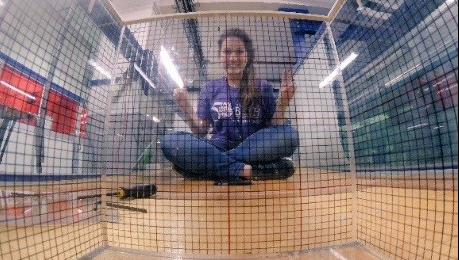Advanced hydraulic modelling for flood risk analysis
We aim to create a new approach of accurately modelling extreme events such as flash floods and to impact building guidelines in flash flood prone areas.

The aim of this project is to accurately model extreme events such as flash floods. The objectives are first to describe accurately the different phases of a dam break and compare it to a flash flood through a parametric analysis. Then, provide high quality flash flood data set to the research community from large scale experimental testing whilst examining velocities and impact forces associated with flash floods on the build environment and finally validate selected numerical models for extreme events with the experimental data.
Project outline
One expected consequence of climate change is an increase in the frequency and magnitude of flooding. 21 million people globally are being threatened by it each year and this number is expected to rise to 54 million by 2030 (World Resources Institute, 2015; An and Yu, 2012). Flash floods are floods mostly caused by a short period intense rainfall (Archer and Fowler, 2015) and are a destructive natural hazard with one of the highest mortalities. Small catchments often have a naturally flashy response to intense rainfall resulting in important damage from small localised events (Werner and Cranston, 2009). Such examples in the UK are the Boscastle flash flood in 2004, the 2005 event in Helmsley and the 1952 flash flood in Lynmouth (Defra; Environment Agency, 2009). Flash floods remain a global problem and due to their dynamic nature combined with their limited spatial and temporal scales, observation and accurate modelling of these events continues to be a challenge. As very limited field data exist from flash floods, a practical approach to initially generate flash floods, both numerically and experimentally, is by representing them by a dam break failure. This guarantees the main characteristic features (Archer and Fowler, 2015): rapidity of onset and the rate of rise in level.
Thus, through experimental work flash floods were generated in a controlled laboratory environment (University College London) on a sloping channel in order to provide further physical understanding of flash floods and their impact. The experimental data were described qualitatively and then compared with numerical results obtained from a 2D-3D coupled model using OpenFOAM’s RAS turbulent model. This was accomplished to validate the numerical simulations of selected numerical hydrodynamic modelling systems.
Science
The following findings have been developed. First, a new dataset has been created through a new experiment. Secondly, from the experimental and numerical work the full physical characteristics of the processes of a dam break can be described. Lastly, from the numerical work it can be shown that the approach to model dam breaks and thus flash floods needs different parametrisation for different stages of the process and cannot be described with one set of parameters for everything. Lastly from the load data acquired from the experimental work of flood wave interaction with structures, initial construction outputs can be taken out in order to design houses that can withstand such an event.
Impact
Possible impacts of this project are firstly a new approach of modelling flash floods by parametrising individually the different stages of the event, and secondly, an impact in policy in order to re-assess building guidelines in construction of buildings in flash flood prone areas.
Published conference paper: - "Study of dam break flow interaction with urban settlements over a sloping channel" was accepted for River Flow 2018, the 9th International Conference on Fluvial Hydraulics. The output of this paper will discuss the possibility of switching the approach industries currently use to predict/model flash flooding.
Journal paper (writing in progress): - “The effect of roughness in flash flood modelling”. The output of this paper will discuss the effect of roughness on a dam break experiment in terms of water depths, velocities and impact forces on urban settlements.
This PhD project is supervised by Dr Jun Zang from the Department of Architecture and Civil Engineering.

